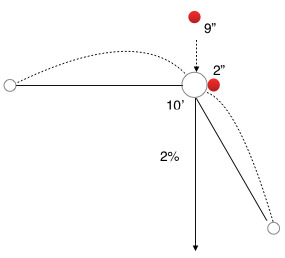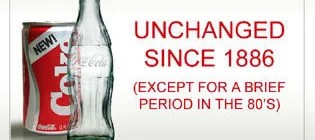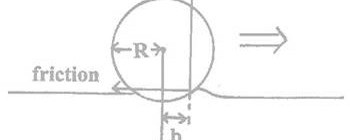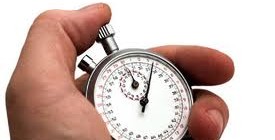How often have you had a great ball striking day, but had huge breaking putts for birdie? You where pin high on every green, but had few to none straight-ish putts? Chipping was good, but had big breaking testers between 4-6 feet. I believe many of golf’s nomenclature is incorrect. This will be my opening salvo to change this!!!
If you read and listen to many of golf intelligentsia, they talk about great distance control. Where the approach shot is pin high (90 degree to slope). But is being pin high the correct game plan? I say not. Yes proximity matters, let me repeat this, Proximity Matters. So does position of ball on a green in relation to the straight putt. I think the truly great scorer places the ball in high percentage putt zone.
I need to set forth a definition before we continue on a high percentage putt zone. This is area on the green where the ball comes to rest near the straight putt (Fall Line). With a cone of 30 degree’s or less off of straight, and 15’ and in for distance of putt. For all you AimPointers out there we are Finding 1’s!!!
The error in thinking is believing a ball that comes to rest pin high, provides the best chance for scoring. This is true some times, 90 degree putts can put you in position for a slight break. More times than not pin high will have you traversing larger amounts of slope. The larger the slope, the more delicate and challenging the putt becomes. By this, I mean that speed and starting line become more dependent on one another to make the putt.
For example: Green Speed is Stimp 10, Slope value is moderate (2%) both putts are at 10’ . Using the AimPoint App your aim on both putts are as follows: 9” of break on pin high putt and 2” of break on the 1’s.

With out going in to to great of depth on green reading and putter face control. I believe one simply needs to be within 30 degrees of straight, and below the hole. This gives you the best chance of making putts. This reduces the amount of break. This also gives you more chances to make with having to be near perfect. See graphic below to show best possible leaves to maximize putts.

Green Pie : uphill 1’s and less – greatest chance of make and least amount of break.
Yellow Pie : downhill 1’s and less – still high level of make, but a little more delicate than the uphill putt.
Red Pie : is pin high, traversing the most slope and break.
So in the future, you know will feel confident telling your playing partners: Nice Break (for pin high shots), instead of nice shot. Knowing is Power!!! On a future blog, i’ll will discuss green mapping with idea of Finding 1’s. To learn more about green reading please visit your local AimPoint Certified Instructor. #makeEverything
Brian Bailie
Senior AimPoint Instructor


























